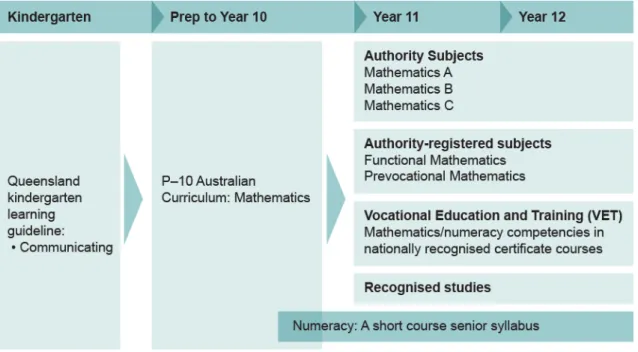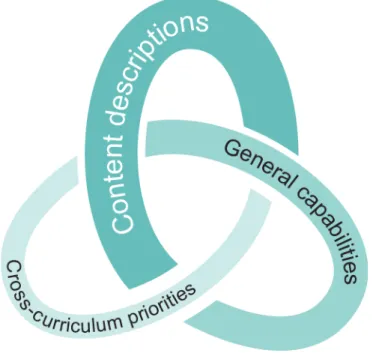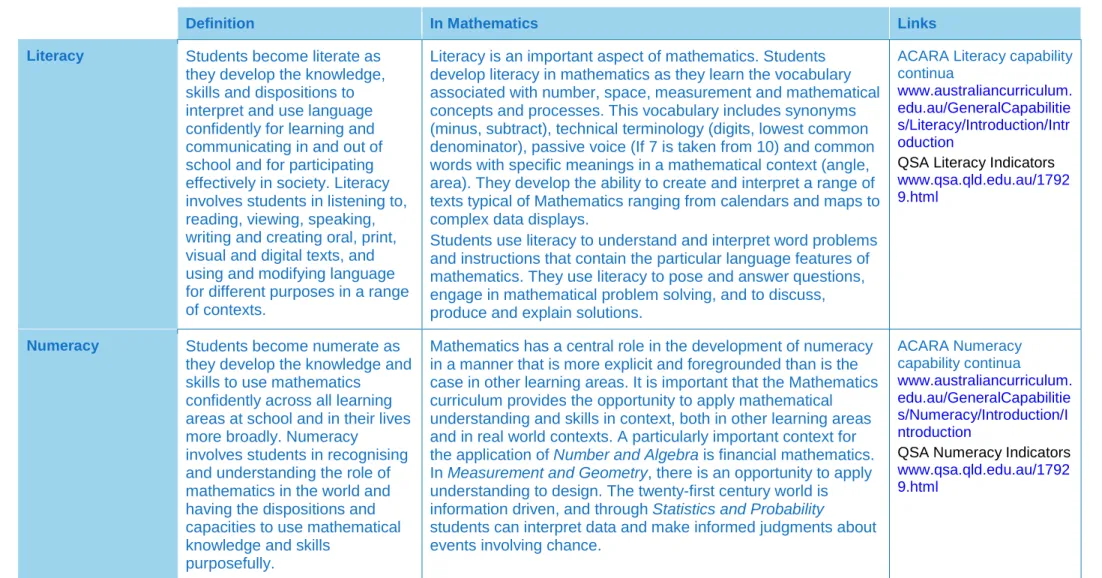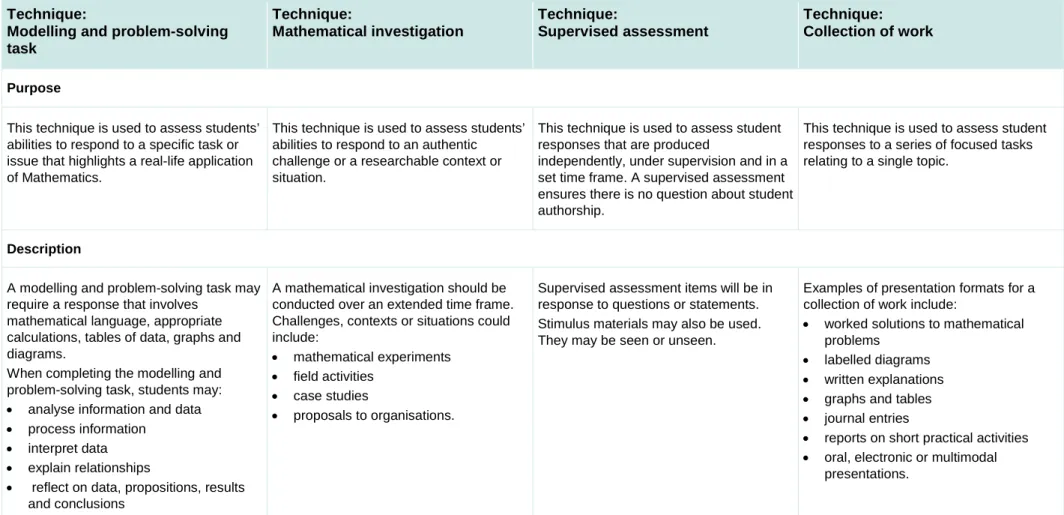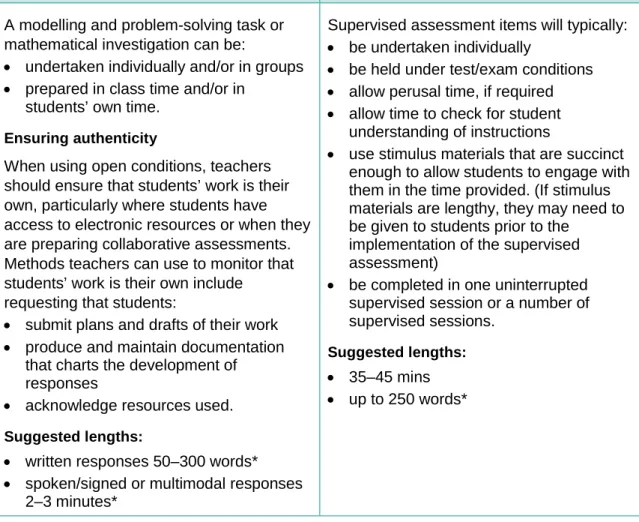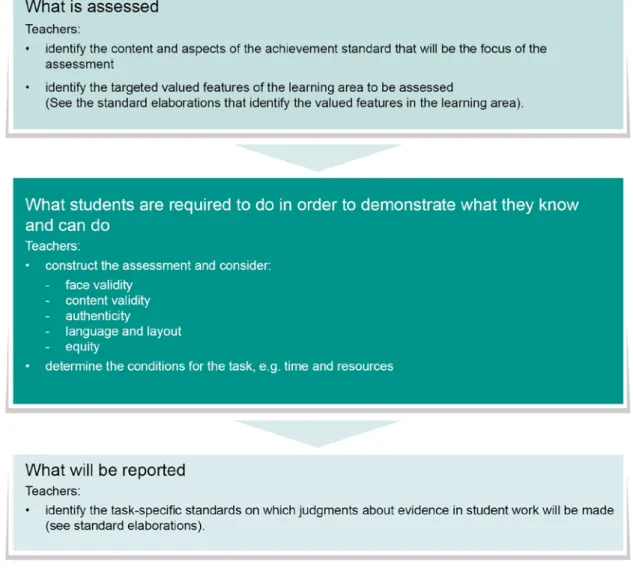Selected material in this publication is from the Australian Curriculum and is used under a Creative Commons Attribution Non-Commercial Share-Equal License.
Overview
Rationale
In geography, interpretation of data supports the study of human populations and their physical environments; in history, students must be able to imagine timelines and time frames to connect related events; and in English the derivation of quantitative and spatial information is an important aspect of the meaning of texts. The mathematics curriculum provides students with a carefully paced, in-depth study of critical skills and concepts.
Aims
Mathematics in Queensland K–12
Curriculum
Australian Curriculum content
- Australian Curriculum: Mathematics Year 5 content descriptions
- General capabilities
- Cross-curriculum priorities
The Australian Curriculum content has three components: content descriptions (section 2.1.1), general capabilities (section 2.1.2) and cross-curricular priorities (section 2.1.3). In mathematics, the content descriptions are organized using three strands: Numbers and Algebra, Measurement and Geometry, and Statistics and Probability. Content elaborations illustrate and exemplify content and help teachers develop a shared understanding of the content descriptions.
Codes included in the Australian Curriculum content descriptions relate to hyperlinks to the Australian Curriculum website
The Australian Curriculum pays particular attention to three cross-curricular priorities that young Australians should be learning about across all learning areas. Students will deepen their understanding of Aboriginal and Torres Strait Islander life through the use and evaluation of statistical data.
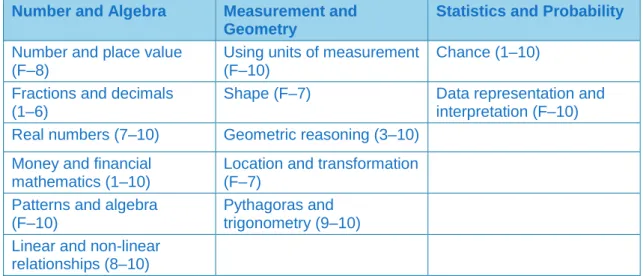
Achievement standards
- Year 5 standard elaborations
The Year 5 Standards work provides a basis for assessing how well students have demonstrated what they know, understand and are able to do using the Australian Curriculum Performance Standard. The Standard Responses should be used in conjunction with the Australian Curriculum Performance Standard and Content.
Planning in the Mathematics learning area
- Time allocation
- Principles for effective planning
- Elements of effective planning for alignment
- Identifying curriculum
- Developing assessment
- Sequencing teaching and learning
- Educational equity
Students receive regular feedback through monitoring, which ensures continuous feedback as part of the teaching and learning process. Formal feedback is provided to students and their parents/guardians at the time of reporting. Teachers use feedback to inform their teaching and learning planning. Planning that takes into account these five elements strengthens alignment and ensures that:. what is taught informs how it is taught, how students are assessed, and how learning is reported. what is assessed is directly related to what students have been able to learn. specific feedback, based on what has been learned and assessed, provides a basis for decisions about continuous improvement in teaching and learning. what is reported to students, parents/carers and other teachers corresponds to what has been learned.
Australian Year 5 Curriculum: Descriptions of Mathematics Content for:. define the scope of learning and ensure all required learning is included - identify relevant general capabilities. identify appropriate contexts for teaching and learning, including cross-curricular priorities. Simultaneously with the teaching and learning program, a test program is planned and developed on the basis of the content descriptions and the performance standard. How will I sequence learning strategies and learning experiences to cover curriculum content, ensure depth of learning, and support student success in assessment.
Students build understanding when they connect related ideas, when they represent concepts in different ways, when they identify commonalities and differences between aspects of content, when they describe their thinking. mathematically and when interpreting mathematical information. Students are fluent when they calculate answers efficiently, when they know strong ways to answer questions, when they choose appropriate methods and approximations, when they remember definitions and use facts regularly, and when they can manipulate expressions and equations to find solutions . Students formulate and solve problems when they use mathematics to represent unknown or meaningful situations, when they design investigations and plan their approaches, when they apply their existing strategies to search for solutions, and when they verify that their answers are reasonable.
Students reason mathematically when they explain their thinking, when they derive and justify strategies and conclusions used, when they match the known to the unknown, when they transfer learning from one context to another, when they prove that something is true or false and when they compare and contrast related ideas and explain their choices. The content strands describe the "what" to be taught and learned, while the skills strands describe the "how" of the way content is explored or developed, i.e. the thinking and doing of mathematics. The general skills are relevant for teaching and learning in mathematics, and explicit teaching of the skills should be incorporated into teaching and learning activities where relevant.
Teachers consider inclusive strategies to make adjustments to teaching and learning experiences and assessments to enable all students to demonstrate their knowledge, skills or competencies.
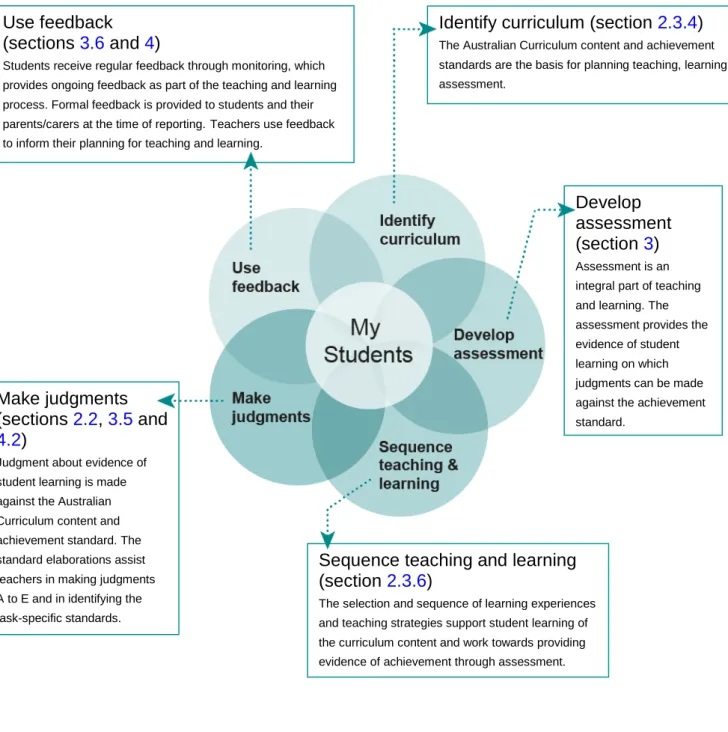
Assessment
- Standards-based assessment
- School-based assessment
- Developing an assessment program
- Year 5 Mathematics assessment folio
- Assessment techniques, formats and categories
- Assessment conditions
- Developing assessments
- Making judgments
- Using feedback
Assessment for Learning — Improving Assessment Pedagogy www.qsa.qld.edu.au/downloads/p_10/as_afl_improv_pedagogy.doc. An example of an assessment program for Year 5 Mathematics is in Exemplary Year 5 Year Plan: www.qsa.qld.edu.au/downloads/p_10/ac_maths_yr5_plan.doc. Teachers can use the standard elaborations to ensure that their assessment program includes opportunities for students to demonstrate their achievement in all aspects of the curriculum content and achievement standard across the A to E range before the end of the year.
It is used to record evidence of the learner's ability to use mathematical skills and communicate mathematical understanding in a task. Identify the specific content descriptions and aspects of the performance standard being assessed to determine what is being assessed. Consider whether students' responses to the assessment will provide evidence of learning for the intended curriculum.
Content validity The extent to which an assessment measures what it claims to measure (either subject content or behavior). Ensure that students are able to demonstrate the full range of standards from A to E in their assessment responses. For example, does the assessment require sufficient depth and breadth of target knowledge, understanding and skills; or encourages students to demonstrate a range of thinking skills.
Use standard preparation to confirm that assessment provides opportunities for students to demonstrate their achievement in specific targeted aspects of the curriculum content and achievement standard. Language and Layout The extent to which the assessment clearly communicates to students what is needed for their best success. Check the level of language required to interpret the assessment and consider how well students will be able to understand what the assessment is asking them to do.
Consider the clarity of the instructions, signals, format,. diagrams, illustrations and graphics and how well they help students to understand what they have to do. The extent to which the assessment allows all students to demonstrate what they know and can do. Note: When students are assessed in a group or team, the assessment must be designed so that teachers can validly assess the work of individual students and not apply an assessment of the group processes and results to all individuals.
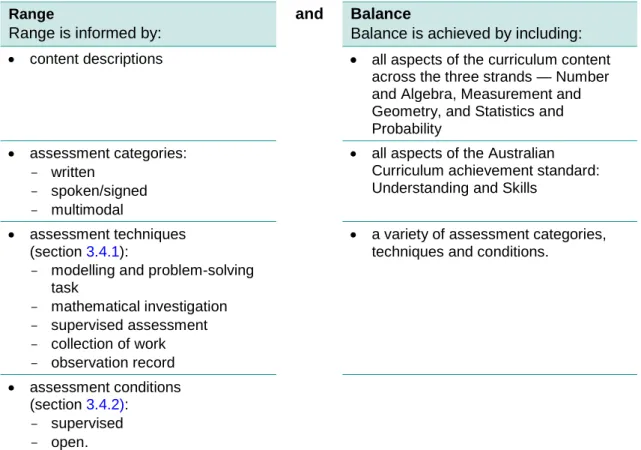
Reporting
Reporting standards
Making consistent judgments about student achievement within and across schools occurs when teachers develop shared understandings of it. curriculum content and achievement standards. Moderation provides students and their parents/guardians with confidence that the grades awarded are an accurate judgment of achievement and that the report is meaningful, professional and consistent. Student achievement is reported against the Australian Curriculum achievement standard for the year level they are learning.
Teachers make reasonable adjustments during the cycle of teaching, learning and. assessment to support the learning of students with disabilities, such as presentation, response, time, schedule, and location accommodations. In most cases, the required curriculum content, achievement and reporting standards will apply to these students. School sectors and schools make decisions in consultation with parents/carers to provide modified or accelerated learning and assessment programs to meet the learning needs of some students.
Achievement reporting for these students should clearly indicate the year level of curriculum content and the achievement standards against which student achievement judgments are made. Achievement in a learning area is only one source of information on student achievement and progress.
Making an on-balance judgment on a folio
- Making an on-balance judgment for mid-year reporting
- Applying the Australian Curriculum achievement standards
A balance judgment does not involve averaging grades across different assessments or "ticking" every box. Rather, it is a professional judgment that considers all the evidence of achievement on the folio. The scores describe how well on a five-point scale students have demonstrated what they know, understand and can do using the Australian Curriculum standard of achievement.
Standard papers help teachers make consistent and comparable evidence-based judgments A to E about patterns of evidence in work. For in-year reporting, balance assessment is based on a sample of evidence of student achievement and progress during the reporting period and against what was taught and assessed during the reporting period. Applying the Australian Curriculum standard of achievement during the year requires judgment based on the matching qualities of student work rather than checking coverage.
The process of assessing and assessing student performance can be supported by gradually phasing student performance into a student profile or similar for each assessment.
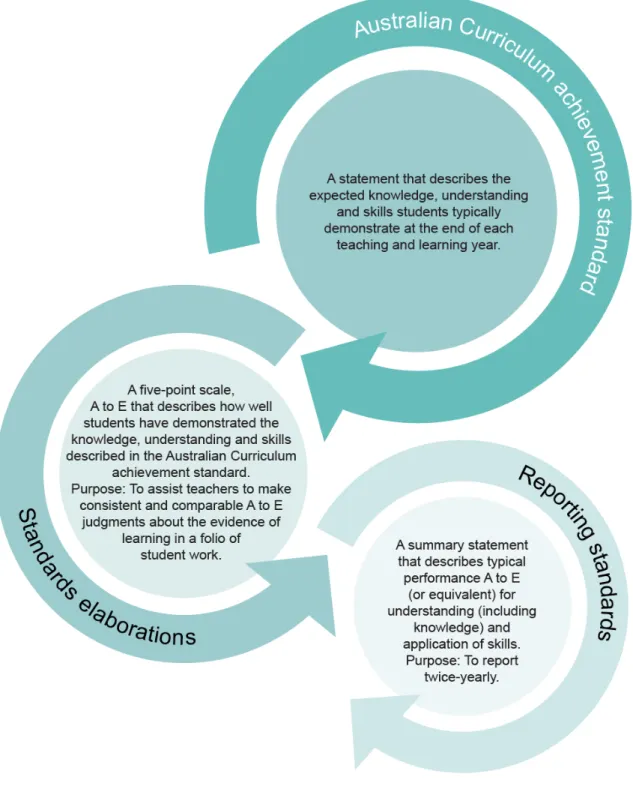
Moderation
Glossary
Students are fluent when they calculate answers effectively, when they recognize robust ways of answering questions, when they choose appropriate methods and approximations, when they remember definitions and use facts regularly, and when they can manipulate expressions and.
Principles of assessment
